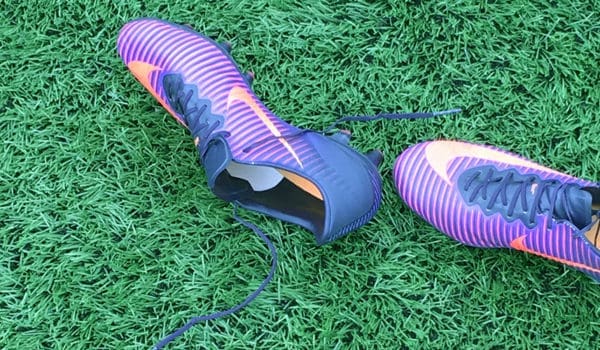From the NILU Annual Report: What engaged 12624 students from 286 schools in 144 Norwegian municipalities in 2017? That would be the research campaign “Check your artificial turf soccer field”!
– We knew that around 3000 tonnes of crumb rubber disappear from Norwegian artificial turf soccer fields every year, explains senior scientist Dorte Herzke from NILU’s Environmental Chemistry department.
– But we wanted to find out more about what happens when the crumb rubber disappears, because they can contain environmental pollutants and be eaten by animals, which is not good for either the animals or the environment.
Unique research project involving kids
To gain more knowledge Herzke, in cooperation with scientists from Akvaplan-niva AS, Sintef Ocean, the Norwegian Institute of Marine Research, the Norwegian Research Council and the Environmental Education Network (The Centre for Science Education at University of Bergen) came up with the idea of involving children and teenagers in a research campaign. After all, they are the ones using the artificial turf soccer fields!
– We wanted to instill knowledge about microplastics and raise awareness about the use of crumb rubber on artificial turf soccer fields all over Norway, Herzke continues.
– We would also like to know more about where these soccer fields are, what kind of crumb rubber is used the most, and what affects the wastage. What we discovered during this project is unique – no one else has done anything like this anywhere in the world – and it is immensely valuable for further research. And as a bonus, we got the students out of the classrooms
To find out more, schools across Norway were invited to contribute data from their local soccer field via the web site “Check your artificial turf soccer field”. Students and teachers examined the crumb rubber on their local soccer fields and played football matches. After the match, they checked the amount of crumb rubber attached to their clothes and shoes, and reported it to the database in terms of milliliters of crumb rubber per game, later converted to milliliter per player. They also included information about weather, number of players, duration of the match, and location and size of the soccer field.

Top engagement, important findings
As of May 1st, 2018, 12624 students and 403 teachers from 286 schools in 144 municipalities have played 594 soccer matches lasting an average of 29 minutes. They have checked 344 soccer fields, and each player has brought approximately 1.9 ml. crumb rubber away from the field after a match.
– The students and teachers have contributed to an important finding. We now know that in 2017, more than 80% of the crumb rubber on Norwegian artificial turf soccer fields were made of SBR, that is, used car tires, Herzke says.
– We also know that the weather plays an important role when it comes to the amount of crumb rubber transported off the field. When it is wet, more rubber attaches to shoes and clothes and is carried away.
The scientists have used the data from the campaign to calculate how much rubber is lost as particles from Norwegian football fields every year. The Football Association of Norway annually arranges 355,000 matches, amounting to about 44 ml per game (2×11 players), in total 14740 liters. 14 740 liters of crumb rubber weigh approx. 6.5 tonnes. The scientists have further assumed that there are about ten times as many training matches played as official matches, thus concluding that players transport ca. 65 tonnes of crumb rubber away from Norwegian soccer fields each year.
– The crumb rubber does not only disappear after soccer matches, says Herzke.
– A lot of crumb rubber disappears from the artificial turf soccer fields through direct drainage through the drains on the fields through the action of wind and weather, or when snow is cleared. However, regardless of how it is transported away from the fields, a lot of the crumb rubber may finally end up in the ocean. This is due to insufficient wastewater treatment over large parts of the country. So, we need to look further into this in the future.
Read NILU annual report 2017:
Read NILU annual report on the web (www.issuu.com):
